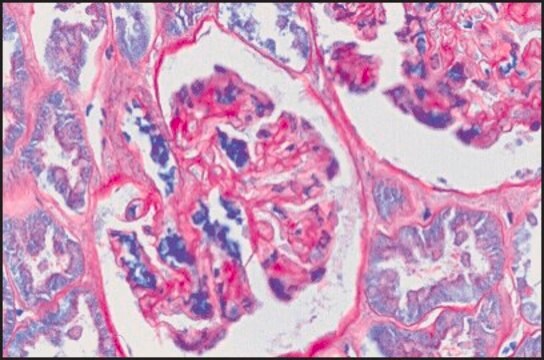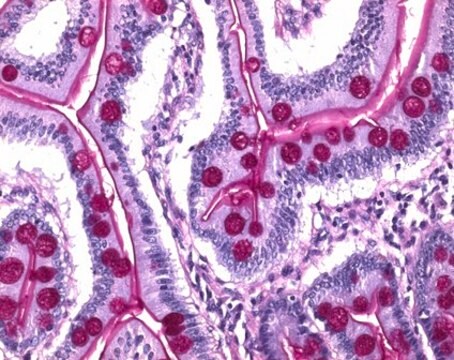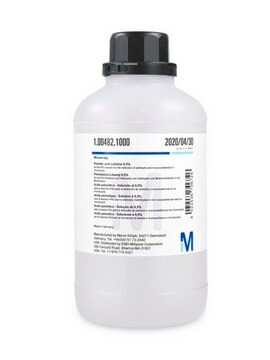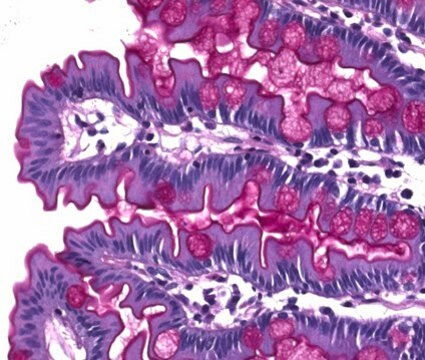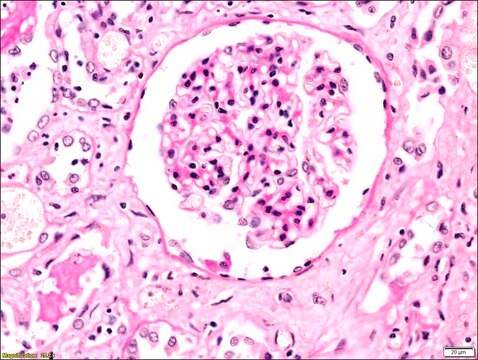P0430
Periodic acid
suitable for electrophoresis, ≥99%
Synonyme(s) :
Iodic acid, Orthoperiodic acid, Paraperiodic acid
About This Item
Produits recommandés
Niveau de qualité
Essai
≥99%
Forme
powder or crystals
Pertinence de la réaction
reagent type: oxidant
Technique(s)
electrophoresis: suitable
Pf
122 °C (lit.)
Solubilité
water: 100 mg/mL, clear, colorless
Chaîne SMILES
OI(O)(O)(O)(O)=O
InChI
1S/H5IO6/c2-1(3,4,5,6)7/h(H5,2,3,4,5,6,7)
Clé InChI
TWLXDPFBEPBAQB-UHFFFAOYSA-N
Vous recherchez des produits similaires ? Visite Guide de comparaison des produits
Catégories apparentées
Application
Remarque sur l'analyse
Mention d'avertissement
Danger
Mentions de danger
Conseils de prudence
Classification des risques
Aquatic Acute 1 - Aquatic Chronic 1 - Eye Dam. 1 - Ox. Sol. 1 - Skin Corr. 1B - STOT RE 1 Oral
Organes cibles
Thyroid
Code de la classe de stockage
5.1A - Strongly oxidizing hazardous materials
Classe de danger pour l'eau (WGK)
WGK 3
Point d'éclair (°F)
Not applicable
Point d'éclair (°C)
Not applicable
Équipement de protection individuelle
Eyeshields, Faceshields, Gloves, type P3 (EN 143) respirator cartridges
Faites votre choix parmi les versions les plus récentes :
Déjà en possession de ce produit ?
Retrouvez la documentation relative aux produits que vous avez récemment achetés dans la Bibliothèque de documents.
Les clients ont également consulté
Articles
Nuclear magnetic resonance (NMR) spectroscopy measures the extent to which a glycan or other molecule distorts a magnetic field.
Notre équipe de scientifiques dispose d'une expérience dans tous les secteurs de la recherche, notamment en sciences de la vie, science des matériaux, synthèse chimique, chromatographie, analyse et dans de nombreux autres domaines..
Contacter notre Service technique